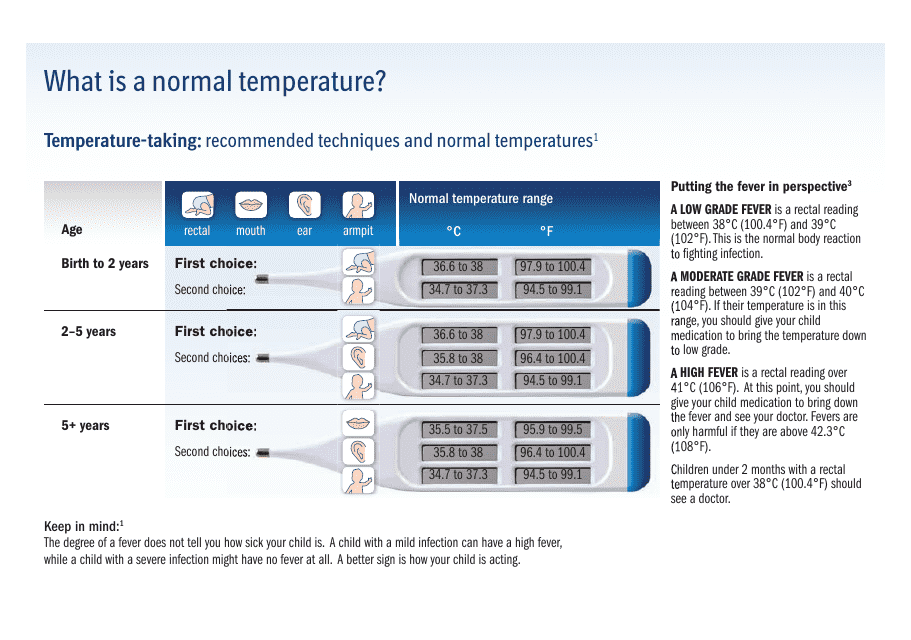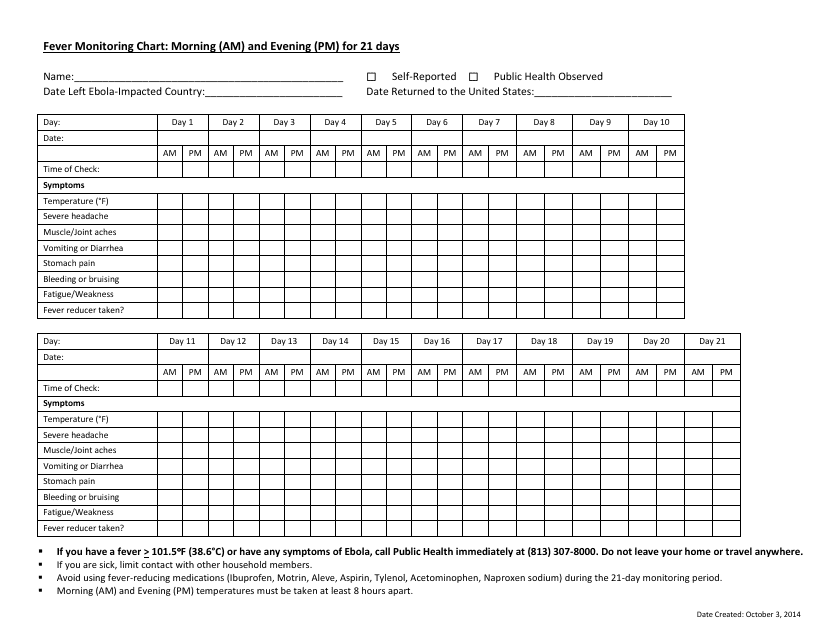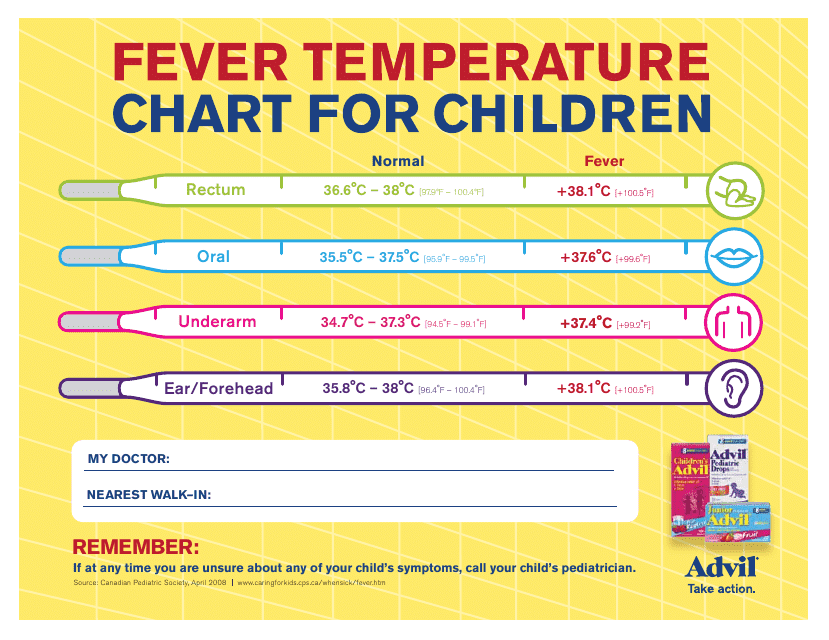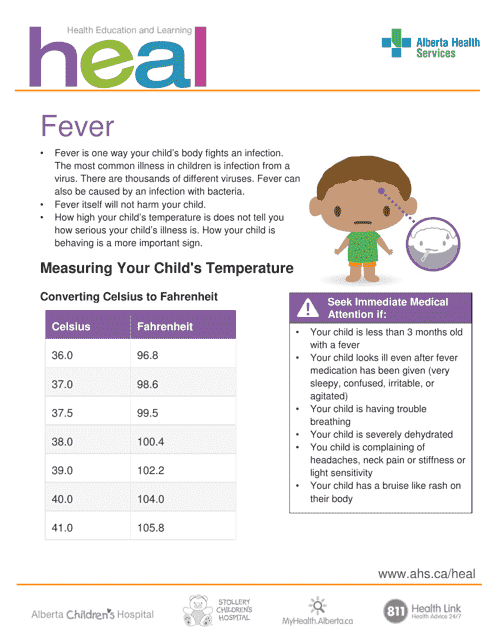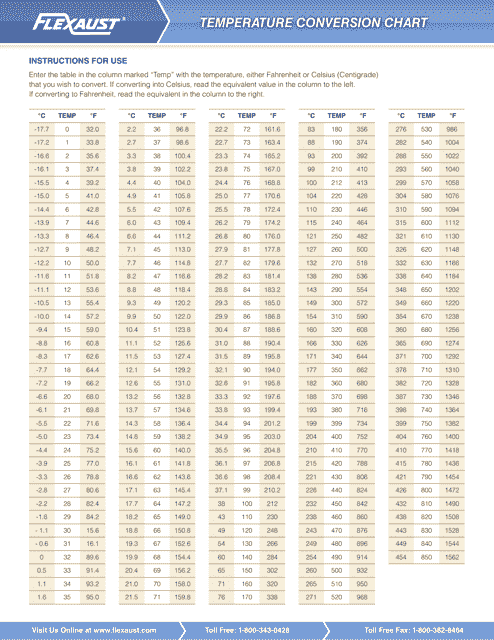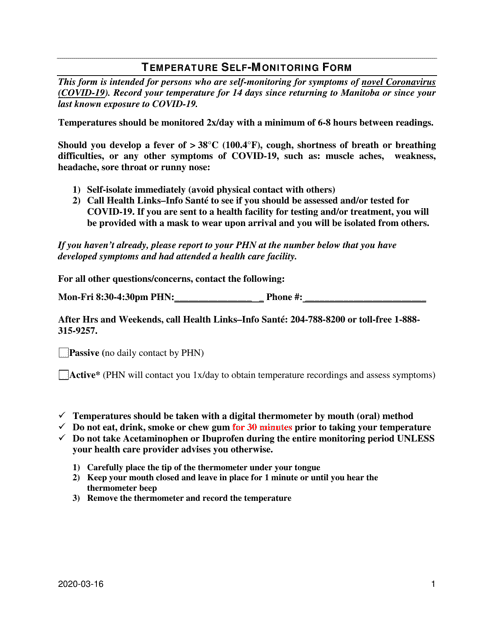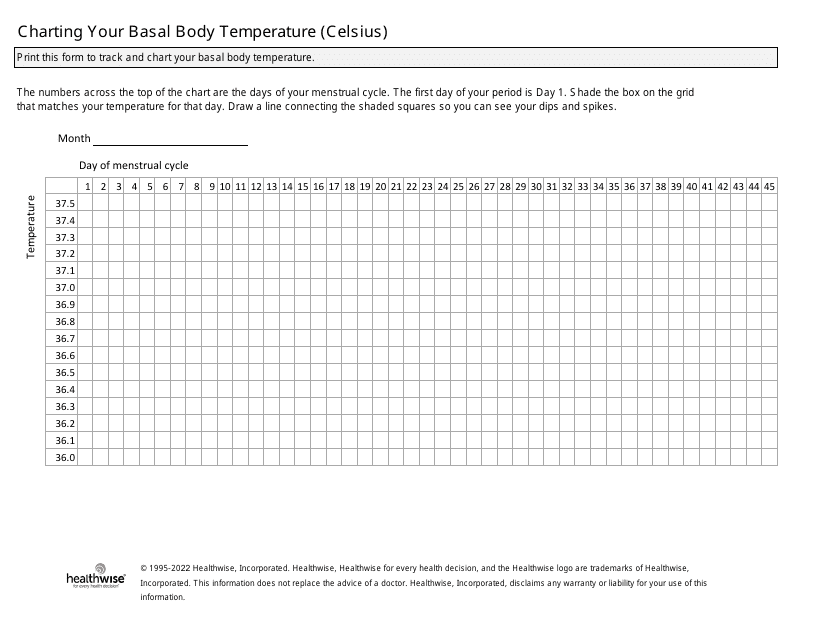Free Fever Temperature Chart Templates
Fever Temperature Chart: What Is It?
A Fever Temperature Chart is a way to monitor an individual’s temperature and compare it to known “normal” references, which will help determine whether or not the temperature of an individual is a cause for concern.
It is important that you use the appropriate chart when looking for a reference. If the individual is an adult, ensure that you use an adult Fever Temperature Chart and for children, a child Fever Temperature Chart should be used. The main reason for this is because there are different normal ranges based on age.
Even when looking at a chart for children, depending on the age of the child the normal ranges could differ as babies have their own Baby Fever Temperature Chart. In babies, a fever presents as low as 99.3 degrees Fahrenheit as their normal range is slightly lower than those of older children. Such a temperature may seem not too serious with older children and may not even be classed as a fever but with babies, this is considered a high fever.
Normal ranges may differ depending on how you have measured the temperature. Whether it is under the arm, rectal, via ear, or mouth – you need to make sure you understand the normal ranges for your specific method. Some methods are more accurate and give more consistent results whilst others can give errors and incorrect values. Generally, it is recommended that digital thermometers are used under the armpit but this may be more difficult with babies and young children as it requires the individual measuring their temperature to sit still and hold the thermometer tightly under their arm which can be extremely difficult to achieve, particularly with babies.
For a full list of Fever Temperature Chart templates please feel free to check out our library below.
Still looking for a particular template? Take a look at the related templates below:
Documents:
13
This document provides a fever temperature chart and instructions on how to take your temperature. It helps you keep track of your temperature during an illness and provides guidance on the correct way to measure your body temperature.
This template is used for tracking and recording fever symptoms in individuals residing in Hillsborough County, Florida. It helps in monitoring fever patterns throughout the day, whether in the morning or evening.
This type of document provides a chart to help parents monitor and track their children's body temperature during a fever. It helps parents determine if their child's temperature is within a normal range or if medical attention is needed.
This document provides a chart that shows recommended doses of fever control medications for children based on their weight.
This temperature conversion and fever treatment dosage chart is specific to Alberta, Canada. It provides guidelines for converting temperatures and dosages for treating fever in children.
This document is a Fever Tracker Chart created by Johnson & Johnson. It helps users track and monitor their fever symptoms over a period of time.
This document provides a chart for converting temperatures between Fahrenheit and Celsius. It helps you easily convert temperature measurements from one unit to another.
This document provides a chart for converting temperatures between different units of measurement, such as Celsius, Fahrenheit, and Kelvin.
This document is a chart used to track and record basal body temperature (measured in Fahrenheit) for monitoring fertility.
This document provides a detailed guideline for monitoring and managing fever symptoms in children, from the medical experts at Blue Fish Pediatrics. Helpful for tracking temperature changes and when to seek medical attention.
This form is used for self-monitoring your temperature in order to track any potential symptoms of COVID-19.
This document provides a comprehensive guide for tracking basal body temperature in Celsius. It's useful for fertility planning and monitoring general health. Detailed instructions on how to record temperature changes accurately and interpret the results are included.
This document provides guidelines and procedures for adult emergency nurses in New South Wales, Australia, specifically dealing with patient cases involving fever. It outlines the necessary steps for patient care and fever management in an emergency setting.

